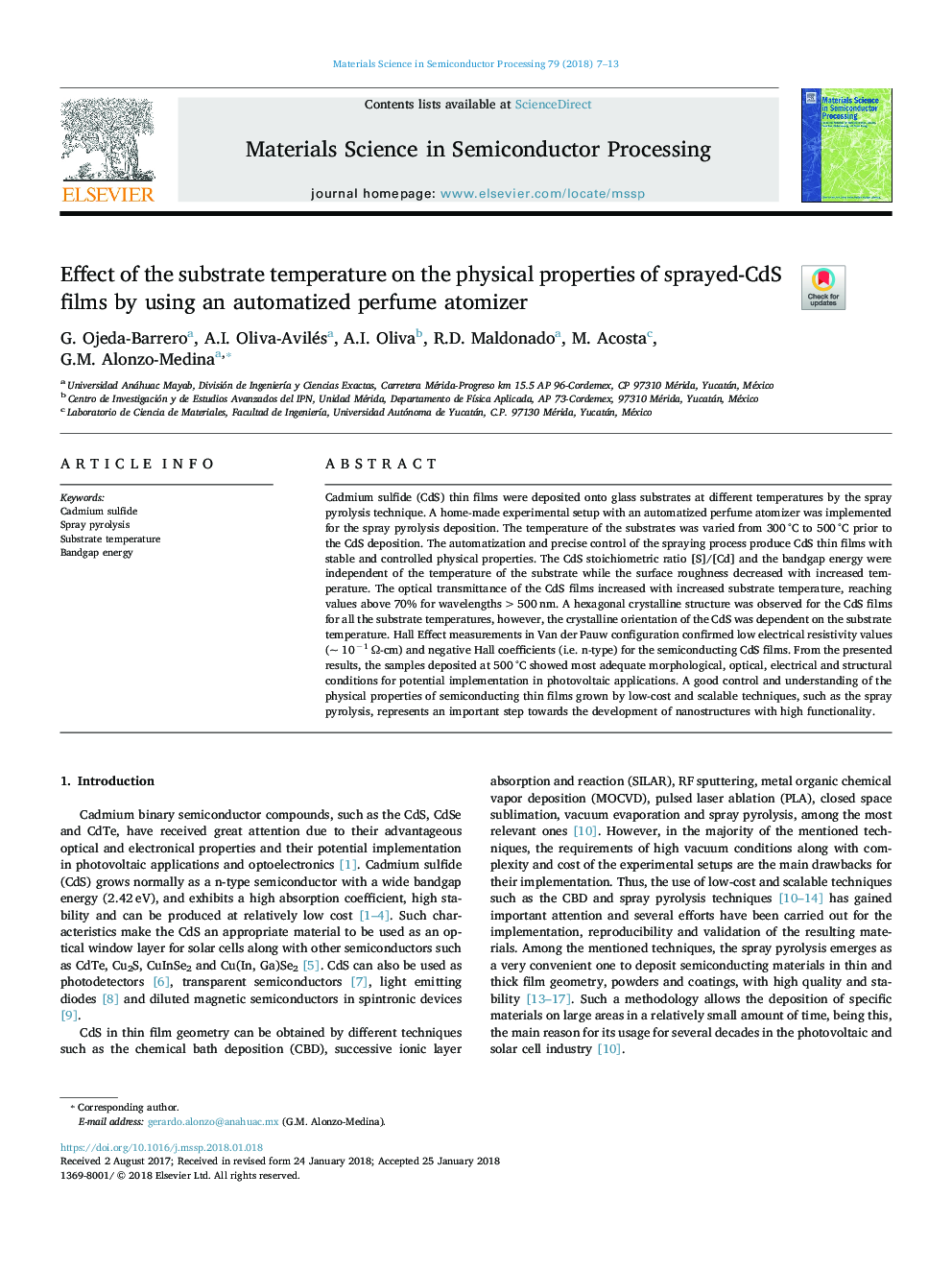| Article ID | Journal | Published Year | Pages | File Type |
|---|---|---|---|---|
| 7117798 | Materials Science in Semiconductor Processing | 2018 | 7 Pages |
Abstract
Cadmium sulfide (CdS) thin films were deposited onto glass substrates at different temperatures by the spray pyrolysis technique. A home-made experimental setup with an automatized perfume atomizer was implemented for the spray pyrolysis deposition. The temperature of the substrates was varied from 300â¯Â°C to 500â¯Â°C prior to the CdS deposition. The automatization and precise control of the spraying process produce CdS thin films with stable and controlled physical properties. The CdS stoichiometric ratio [S]/[Cd] and the bandgap energy were independent of the temperature of the substrate while the surface roughness decreased with increased temperature. The optical transmittance of the CdS films increased with increased substrate temperature, reaching values above 70% for wavelengths > 500â¯nm. A hexagonal crystalline structure was observed for the CdS films for all the substrate temperatures, however, the crystalline orientation of the CdS was dependent on the substrate temperature. Hall Effect measurements in Van der Pauw configuration confirmed low electrical resistivity values (~ 10â1 Ω-cm) and negative Hall coefficients (i.e. n-type) for the semiconducting CdS films. From the presented results, the samples deposited at 500â¯Â°C showed most adequate morphological, optical, electrical and structural conditions for potential implementation in photovoltaic applications. A good control and understanding of the physical properties of semiconducting thin films grown by low-cost and scalable techniques, such as the spray pyrolysis, represents an important step towards the development of nanostructures with high functionality.
Related Topics
Physical Sciences and Engineering
Engineering
Electrical and Electronic Engineering
Authors
G. Ojeda-Barrero, A.I. Oliva-Avilés, A.I. Oliva, R.D. Maldonado, M. Acosta, G.M. Alonzo-Medina,
